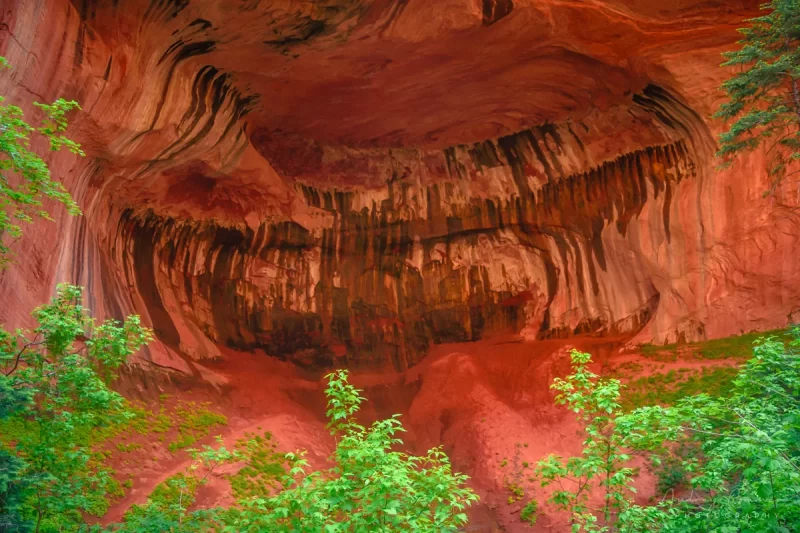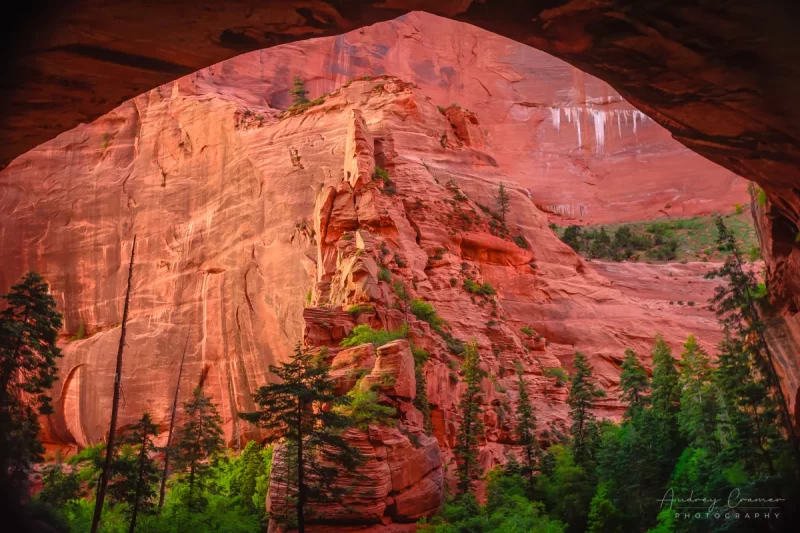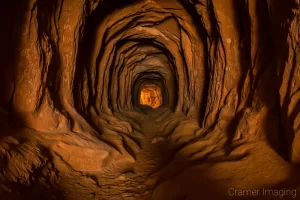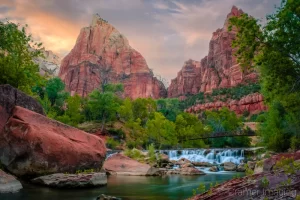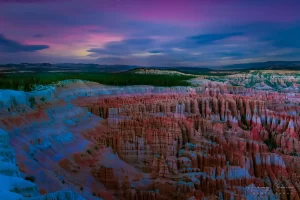Lately, one of my more favorite things to do in the local national parks is to seek out underappreciated and remote nooks. Many times, these spots make for some great landscape photography opportunities. I found just such another place and took a trip out there. This was a hidden double alcove of sorts. They call them arches. They look more like overhangs or caves to me, but what do I know there? Here’s how that photo shoot went.
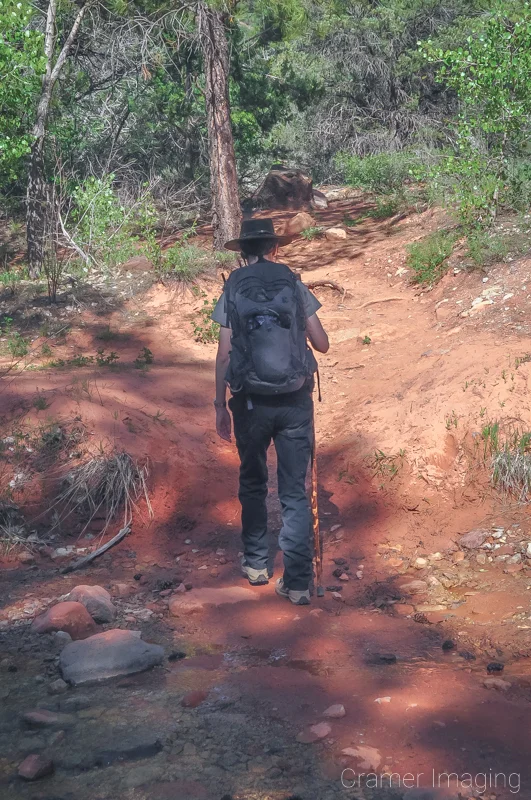
This story starts out as a very pleasant hike if you don’t go on a national holiday known for outdoor activity. Our first challenge was parking. I was wrong about whether or not we would find parking in the parking lot by the trail head. We did not. Sadly, we needed to drive up the road a ways in order to find the closest turn-out. Thankfully, there was a spot there which we squeezed into. However, this did add a significant distance onto an already sizable planned hike. We didn’t even have the benefit of a flat surface for this extension. It was sloped. We walked uphill on the way back.
My careful research of the trail turned up a few concerns which we did our best to account for. There are so many stream crossings on this trail. Thankfully, they are all shallow and short. There’s even lots of rocks to help you ford. It’s nothing like what Kanarraville offers in the way of stream crossings. However, we still packed some water shoes just in case. I didn’t want a repeat of my wet feet there. We also checked the stream flow with the rangers before we embarked on the hike. They confirmed that it would not be problematic for us.
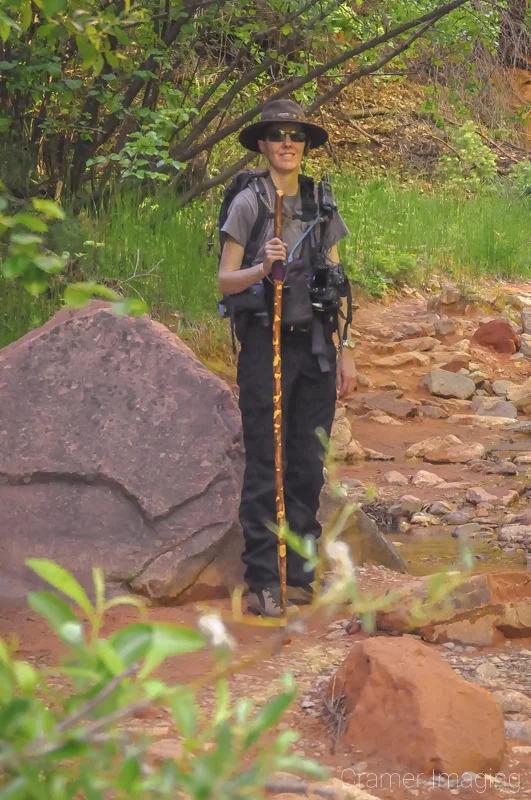
Also, I also made sure we had bug spray with us this time. I really didn’t enjoy my experience on the last hike being eaten alive and the subsequent swelling which happened on my arms. This unfortunate experience happened a couple weeks ago on the Lower Calf Creek Falls hike. So, I made a point of packing a can of bug spray to go with us as well. As we were hiking in late spring next to a creek, it came in handy too. We didn’t see any of the biting flies reported there, so that’s lucky. However, we did see something else.
Suddenly my spouse brought me up short. There was something ahead which I hadn’t noticed yet. An Asian couple passing us on the trail startled a rattlesnake which was basking in the warm sun. That was a trail hazard which we didn’t anticipate at all. There are Great Basin rattlers in the area, but this was our first wild rattlesnake encounter. I kept my distance but pulled out my cell phone for photos. Yes, I could have grabbed my regular camera, but my brain said phone instead. So, that’s what I went with. Here’s that snake. Yes, they can have green tinge. I looked that up to be sure.
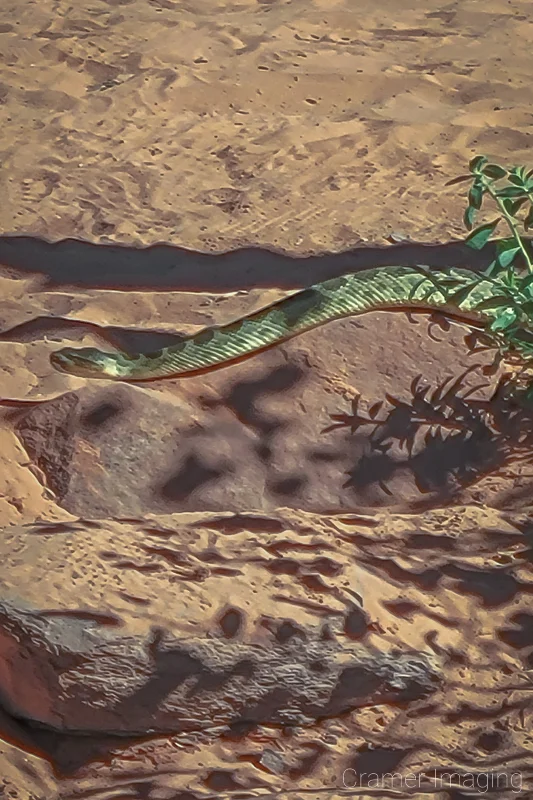
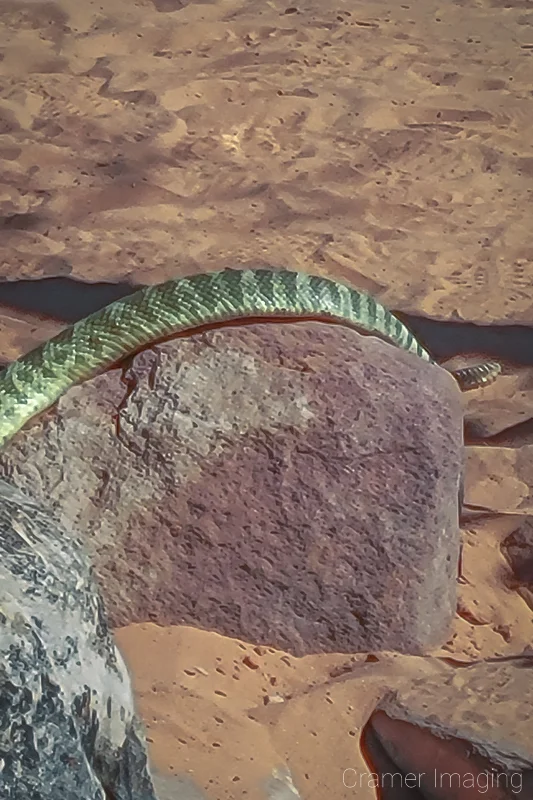
You can see from the right-hand or second photo that it is indeed a rattlesnake. Thankfully, it didn’t bother anyone. It simply slithered off the trail and into the brush. Still, I kept my eyes on the threat for as long as I could. Also, we warned the next several groups of hikers we passed about the snake.
Once we made it about a mile in on the trail, we ran into a historic cabin. This is the Larson cabin. It was built in the late 1800’s. Now it’s an archeological site and off-limits. With how much it’s deteriorating in the years since occupancy, I don’t think it’s safe to enter. It’s padlocked. Still, it made a great progress check for us.
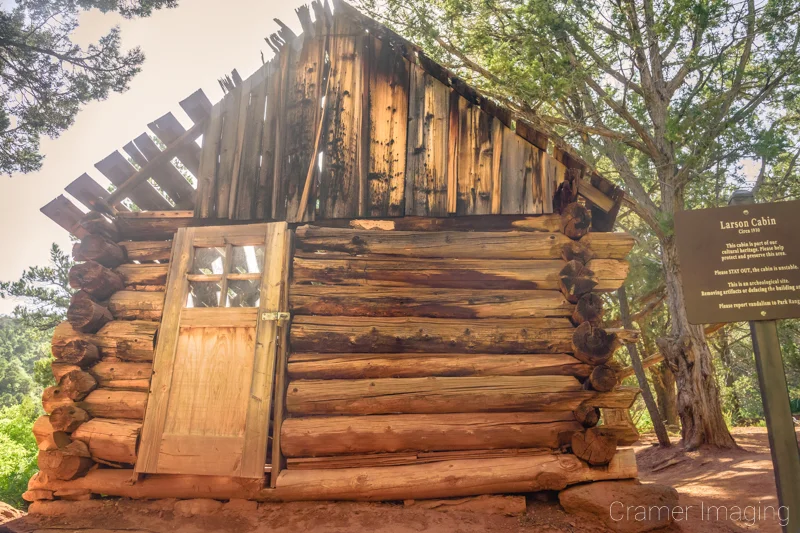
After we made about another mile on the trail, we ran into the other historic cabin: the Fife cabin. This cabin was built much later in the 1930’s or so. However, it’s also an archeological site. This time, I peeked in the window. I know for sure that this cabin is unsafe to enter. The floor is rotting away. There’s way too many places where you see dirt instead of floor. Also, there’s a piece of the stove pipe still hanging from the roof and another on the floor. The stove itself seems long-since removed. The chink is missing from between the logs. This cabin is also padlocked.
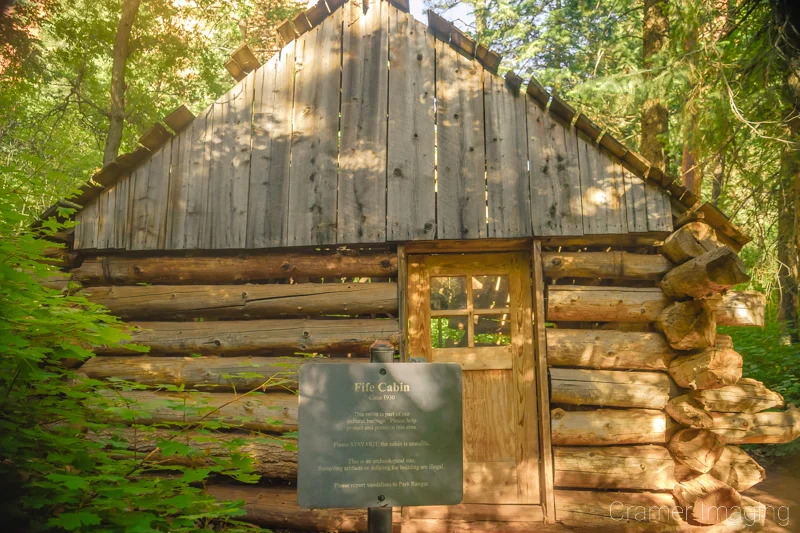
After what felt like forever and a million stream crossings (all the way from start to finish), we finally made it to the hidden double alcove we sought. We even had the place to ourselves. We were the last in and last out. Thanks to some online photos, I had a general idea of what to expect once there and what shots I wanted to try for. What I didn’t expect was size. This double alcove is so big that I couldn’t fit it into a single frame. Believe me, I tried. I backed up the trail and sought out a way. Perhaps, that will need to be a vertical panorama instead. Here’s what the bottom alcove looks like.
You can’t climb to the upper alcove. There’s no path and it’s way too high up. So, we contented ourselves with exploring the bottom alcove.
With sunset rapidly approaching and a long hike back, I got to work as quickly as I could. With one planned example shot, I quickly learned that particular photographer either panned the photo or used a fish-eye lens. Even my wildest angle lens couldn’t capture the scene. Still, I gave it a good try. I like how it turned out too. To me, it looks like an ancient idol statue carved out of the rock and left to weather.
The sunlight shone on the rock formation for the first part of golden hour. Sadly, it blew out the highlights there. So, I waited until the sun set enough to even the light on the rocks. While I waited, I found some of the surrounding rocks with dripping water interesting. It reminded me a bit of Mossy Cave at Bryce Canyon. So, I snapped a shot of it.
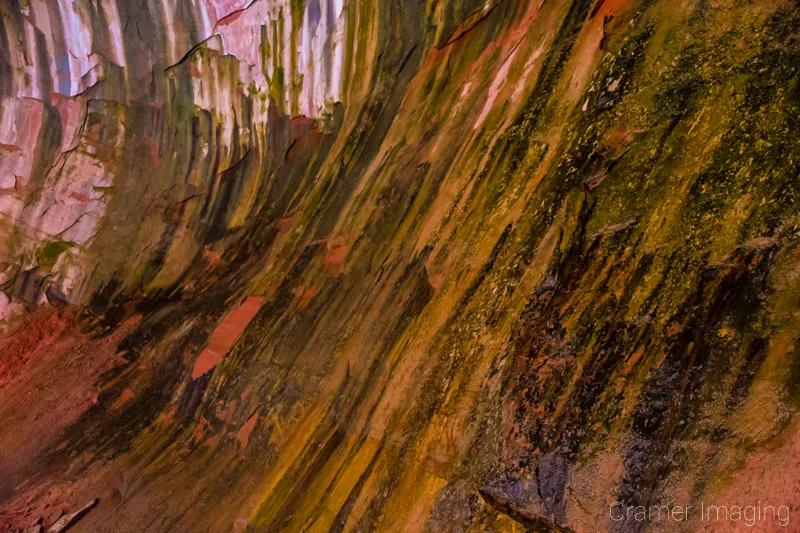
This double alcove did not disappoint. I found some great photos here. It’s one I must consider returning to at some point in the future for that vertical pan to really show off those “arches.” I made quick work of my landscape photography. I knew light was fading fast but I wanted to maximize what light remained for hiking back out with.
We were tired and sore when we made it back out to the car. I was so glad to pull my backpack off and rest. But, I think this trip was worthwhile. I came back with views which most people don’t see of Zion National Park. This double arch or alcove is definitely an underappreciated part of the park. I’m glad I saw it for myself. How about you? What do you think of this sight in Zion? Please leave your thoughts in the comments section below.

